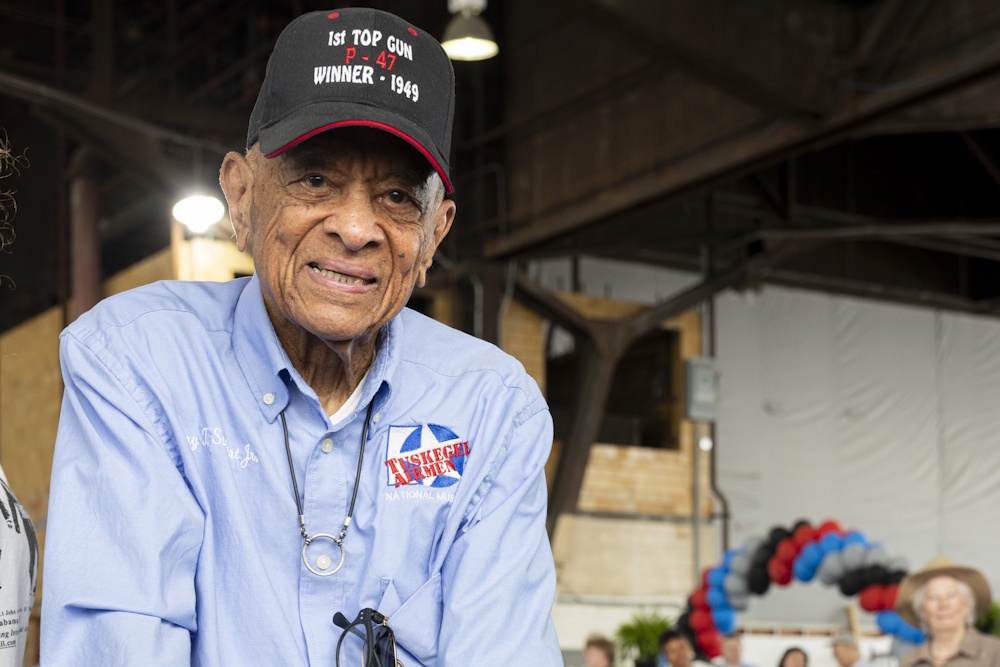Harry Stewart Jr. was one of the last remaining Tuskegee Airmen, who distinguished himself with airborne feats in battle and in competition.
- Died: February 2, 2025 (Who else died on February 2?)
- Details of death: Died at his home in Bloomfield Hills, Michigan at the age of 100.
- We invite you to share condolences for Harry Stewart Jr. in our Guest Book.
Harry Stewart Jr.’s legacy
Born in Virginia and raised in New York City, Stewart grew up watching planes take off from and land at the airfield near his childhood home, which would later become LaGuardia Airport. When he was 17, he signed up for the U.S. Army Air Forces, wanting to avoid the randomness of the draft and find his way to a pilot’s training program. At 18, he was sent to Tuskegee Army Airfield to train with the first group of Black pilots. Having grown up attending desegregated schools in Queens, Stewart experienced a shock of segregation when he traveled south to Alabama for his Army training, but in a later interview, he said he tolerated it because “I had my eyes on the prize — and that was getting my wings.”
Stewart got his wings, and he was sent to Europe as part of the all-Black 332nd Fighter Group. One of his most notable days of the war came on April 1, 1945, when he was flying a bomber escort mission. His unit ran into a group of German fighter planes, and a battle ensued. Stewart shot down two German planes in quick succession, then found himself with a third on his tail. He dove and turned to evade it, performing precision maneuvers that proved too tricky for the German pilot, who overcorrected and crashed. Stewart was given credit for the kill, making him one of only four Tuskegee Airmen to shoot down three enemy planes in one day. Overall, he flew 43 combat missions during World War II.
Stewart remained in the service after the war, and another notable moment came in 1949. Air Force brass decided to revive a competition that had been held regularly before the war, known as the Fighter Gunnery Meet. Stewart was on a team with other members of his all-Black fighter group, competing in the piston division. They won, besting all-white fighter groups to become the competition’s Top Guns.
After leaving military service in 1950, Lt. Col. Stewart wanted to become a commercial pilot, but his applications were denied due to his race. Many years later, he was named an honorary captain by American Airlines and Delta Airlines. Instead of flying professionally, Stewart got a degree in mechanical engineering from New York University and relocated to Detroit, where he worked for the ANR Pipeline Company. He was a vice president when he retired.
Stewart on flying a P-51 Mustang
“It was thrilling. It was like you had been driving a jalopy around and somebody comes up and asks, ‘Would you like to get in this Maserati?’ It was beautiful. It was really a pilot’s aircraft — very responsive to commands. It was like an extension of your own body. The wings became your arms and the rudder pedals your legs and the fuselage your body. It was like you had melded into one machine.” — from a 2020 interview for History Net
Tributes to Harry Stewart Jr.
Full obituary: Detroit Free Press
